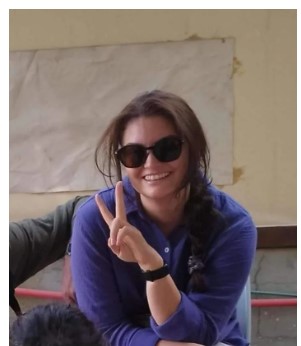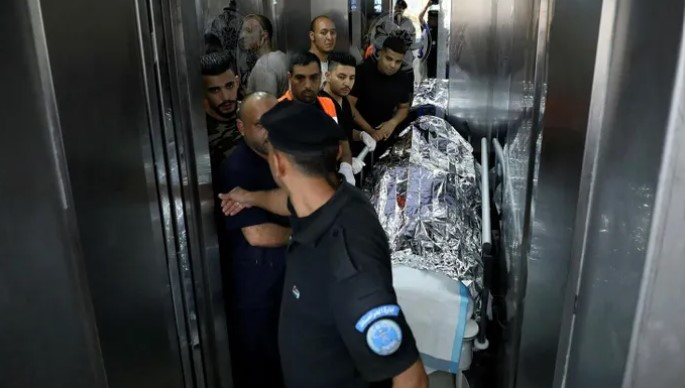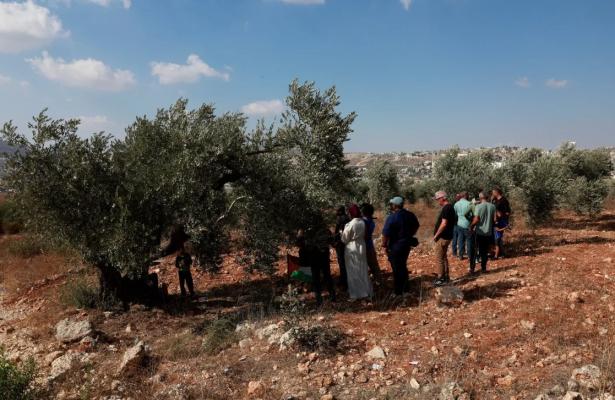Three eyewitnesses present at the protest in the West Bank town of Beita, where a 26-year-old American-Turkish human rights activist was shot dead on Friday, told Haaretz that Israeli troops shot her for no reason and there had been no clashes at the time.
An IDF spokesperson said that the "troops responded by shooting at a key instigator who had been throwing stones at the forces and posed a threat to them."
But, according to eyewitnesses, the soldiers were positioned in a way that allowed them to clearly see Aysenur Ezgi Eygi, the activist who was shot. One activist blamed the Biden administration for her death because it failed to impose sanctions on the IDF a month ago after another American was wounded in Beita by the army's gunfire.
Vivi, an American activist who was at the protest against the nearby Evyatar outpost, said the shooting occurred after the army had dispersed local and foreign protesters from the first protest site.
"We thought that the demonstration was pretty much over because nothing was happening," she said. "First we heard a shot and it hit a dumpster that two volunteers were sitting behind and then there was a shot that hit Aysenur in the head".

(Credit: Haaretz)
The activists said Eygi was not confronting the troops and hadn't been throwing stones at any point during the protest, and that at the time of the shooting it was calm. She added that even if one of the protesters had been throwing stones, the soldiers were so far away that they couldn't have been struck and could not claim self-defense.
"I was immediately just so shocked when I saw her laying on the ground, not moving," said Vivi. "It was a direct shot to the head, it was not an accident. She was being extra safe out of all of the volunteers, she and her friends were standing the furthest back, in the safest spot that we thought."
Vivi added that "they would have known that she was an international volunteer because she is a woman and she was standing with other foreign volunteers, not next to the Shabab." She added that at the time of the shooting, there were soldiers standing on a road at the top of the hill while the protesters were down the hill, as well as soldiers standing on the roof of a building. She said she did not know which of them fired the shot.

Miriam, a European activist who was also in the protest, said there was no stone-throwing at the time. "We were standing, we were visible to the army, just standing around not doing anything. Nothing was happening. I heard two live shots - one hit a metal object and then a Palestinian and injured him in the leg and then one second after I turned and I saw Aysanur laying unconscious on the ground."
She said she was surprised by the gunfire because at that point nothing was happening, and the soldiers were positioned about 200 meters away and above the protesters.
"They're saying that there was stone-throwing and we were putting them in danger, but they could see us directly and that we were endangering no one," she said. There were clashes between young Palestinians and the army, she mentioned, but they occurred earlier and in another place where the demonstration began. The international activists and the Palestinians ran towards the village after the army used tear gas and gunfire to drive the protesters away.
Jonathan Pollak, a leftist activist and Haaretz journalist who was at the scene, said Eygi was shot by soldiers who were positioned on the roof of a house about 150 meters away at a time when there were no clashes.
He said even before the prayer planned for the beginning of the demonstration began, soldiers arrived and surrounded the worshippers. He said that when the prayer ended, clashes began between troops and the Palestinian youths, with the former using tear gas and live fire to push the protesters back towards the villages. The shooting, he said, occurred about 20 minutes later.
"We were standing on the road and it was calm – nothing was happening. Soldiers climbed onto the roof of a house and I saw a soldier aim and then I heard gunfire," Pollak said. "The first gunfire hit something metal and then the knee of a young man from the village, and then there was more gunfire. Then someone called my name in English and said they needed help. I ran about 15 meters and saw her lying on the ground under an olive tree, bleeding to death. She had been shot in the head. I looked up and saw that you could see directly between us and the soldiers."
Pollack added that Eygi had arrived in Israel several days earlier and that it was the first protest she had joined.

A month ago, another American citizen was shot and wounded in the thigh during protests at Beita. Witnesses who spoke with Haaretz then said troops shot at him while he was fleeing the scene.
Vivi blamed the Biden administration for failing to impose sanctions on the IDF after the first American was shot. "This is a direct result of the inaction of the American government to condemn the army for harming American citizens," she said.
"They did nothing to punish Israel [after an American activist was shot and injured in Beita], they didn't do any sanctions or even stop the weapons, in fact they committed to sending many more weapons," she added.
"This tells the Israeli army that they can harm American citizens with impunity. They already do that to Palestinians, now they know they can also do that to Americans," Vivi said.
Eygi came to the West Bank under the auspices of the International Solidarity Movement, who sends foreign activists to the area to express solidarity with the Palestinians and join in protests. Other foreign activists come under the auspices of an organization called Faz3a.
[Hagar Shezaf is Haaretz's West Bank correspondent since 2019. Based in Tel Aviv, she covers mostly settler, Palestinian and military affairs in the West Bank for the paper. She is a Hebrew and Arabic speaker. @hagar_shezaf.]


Spread the word